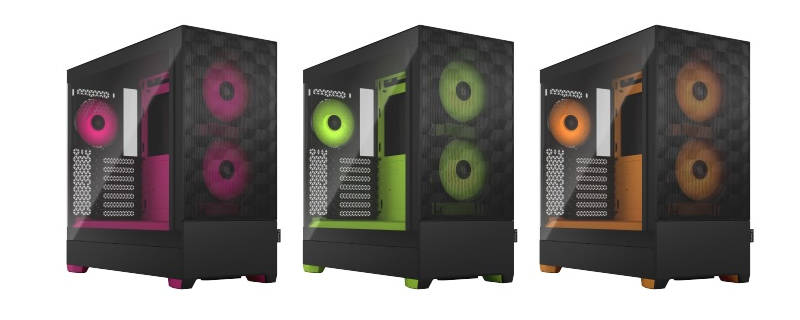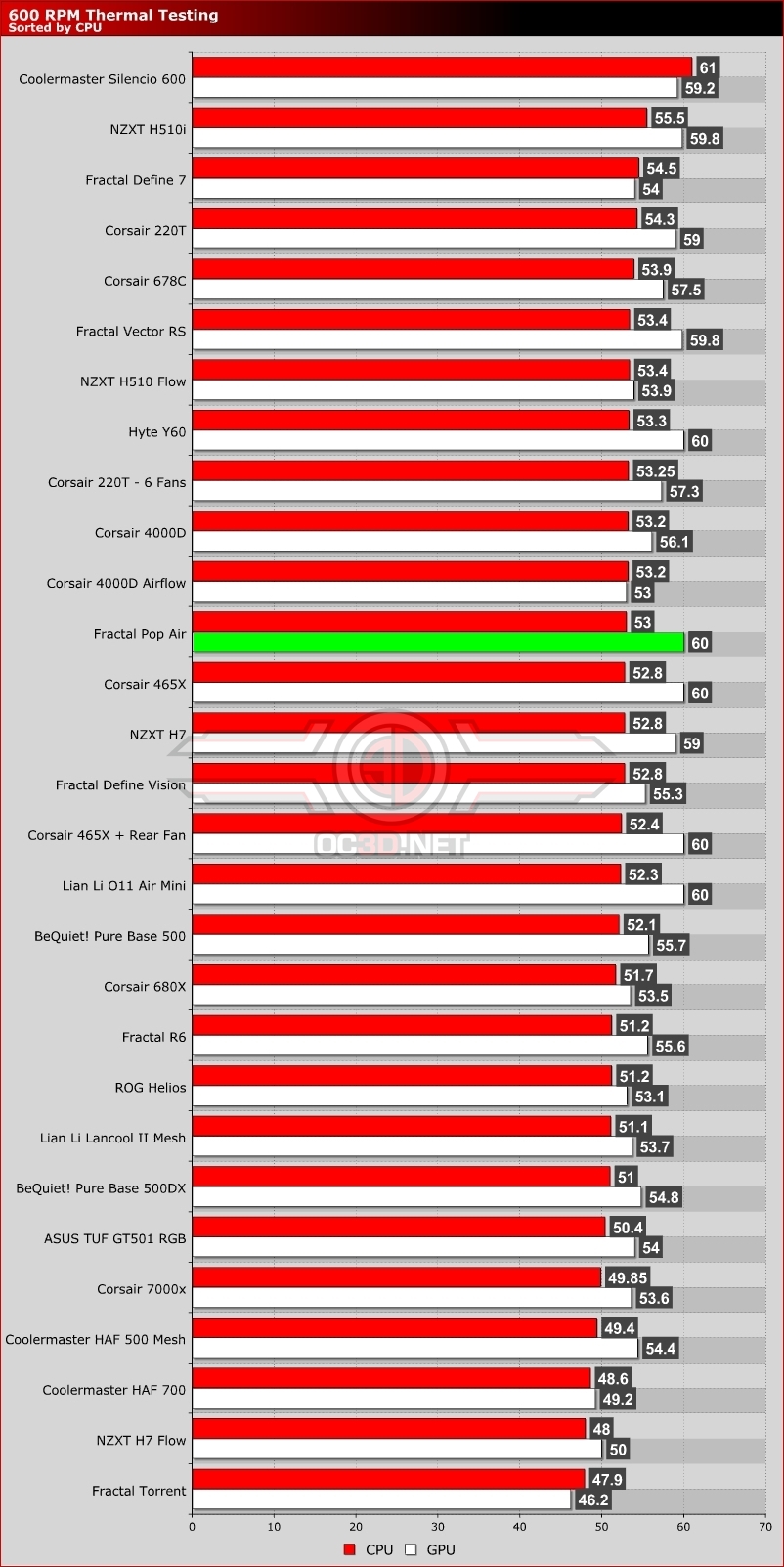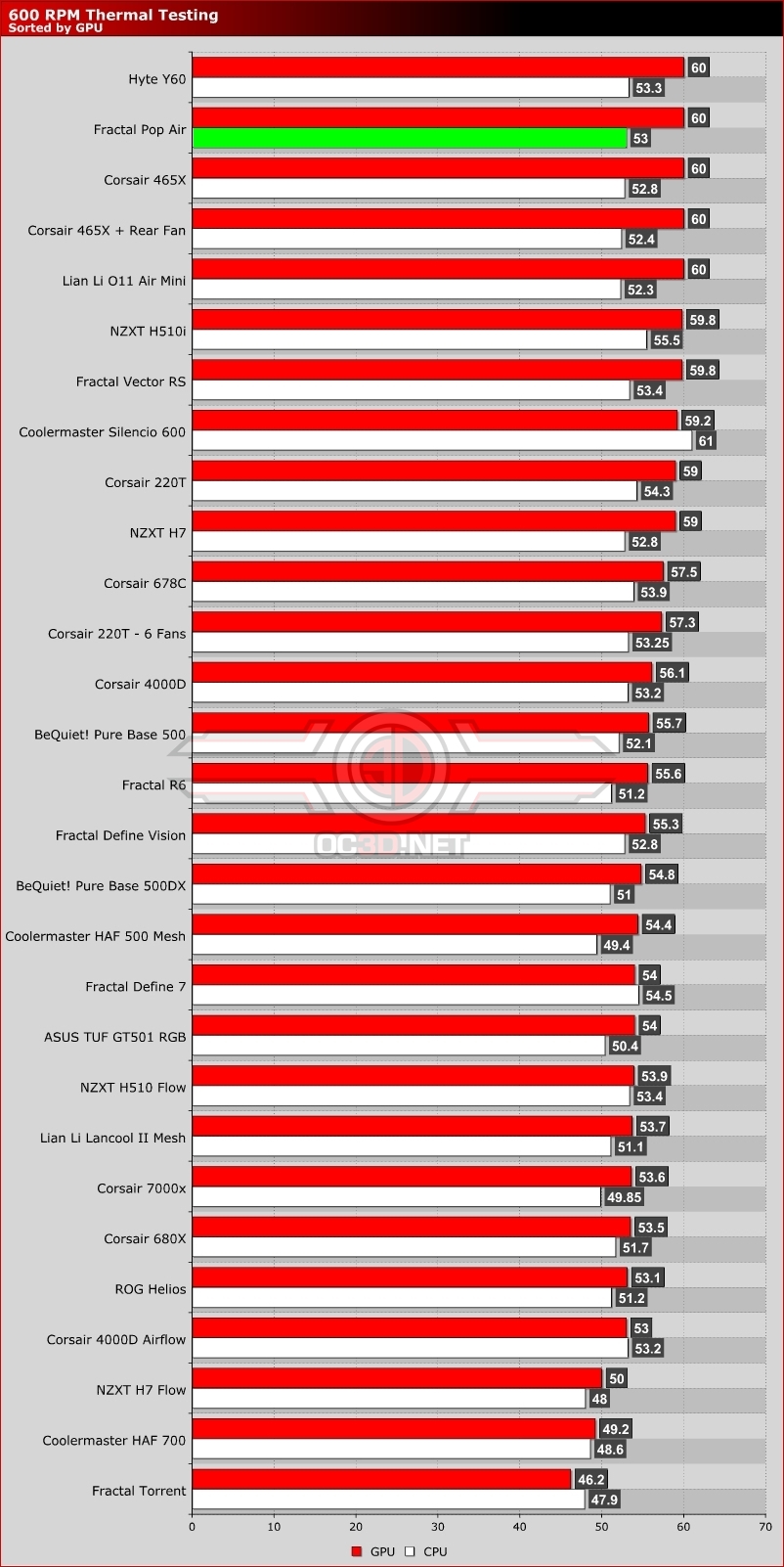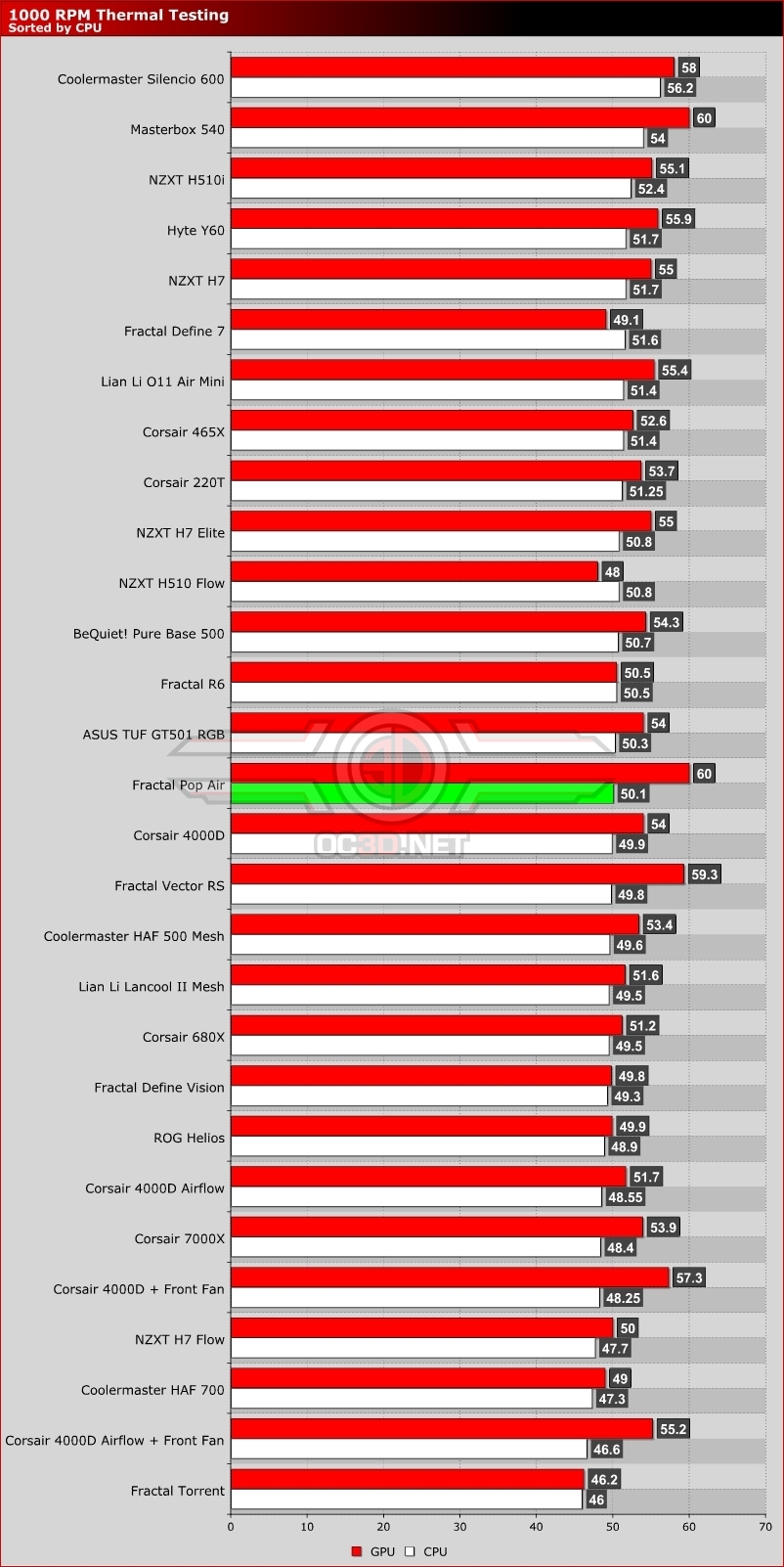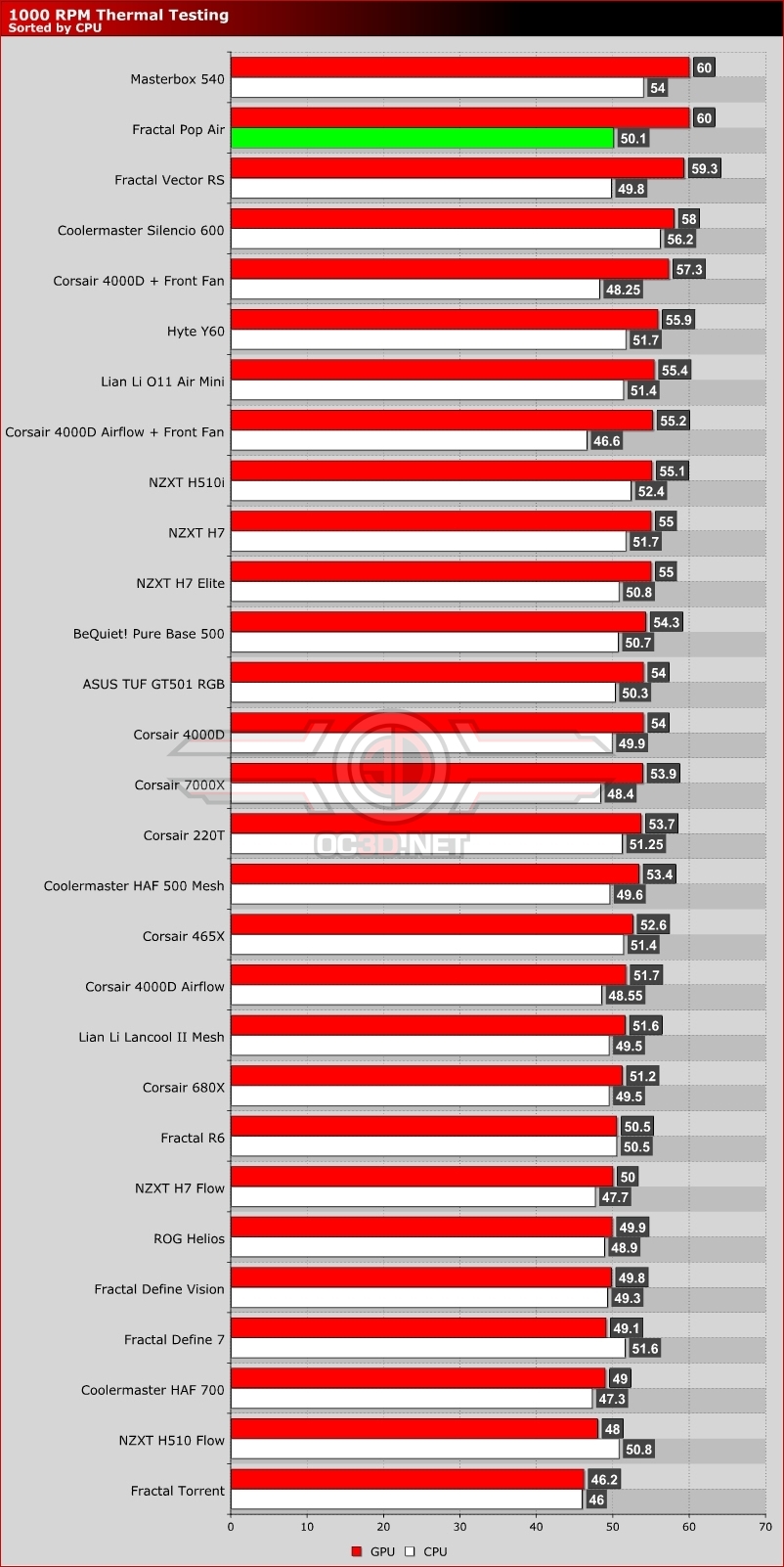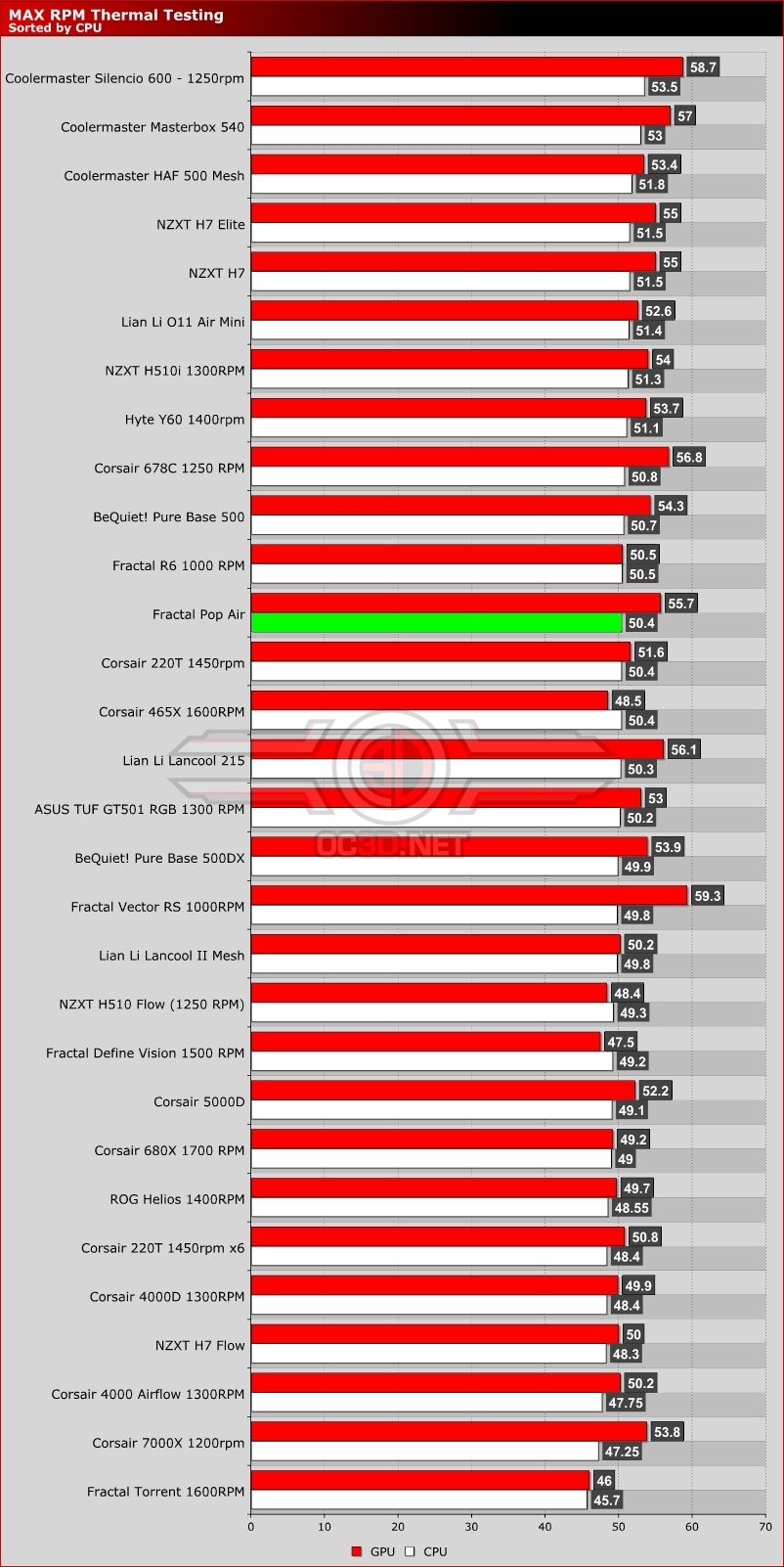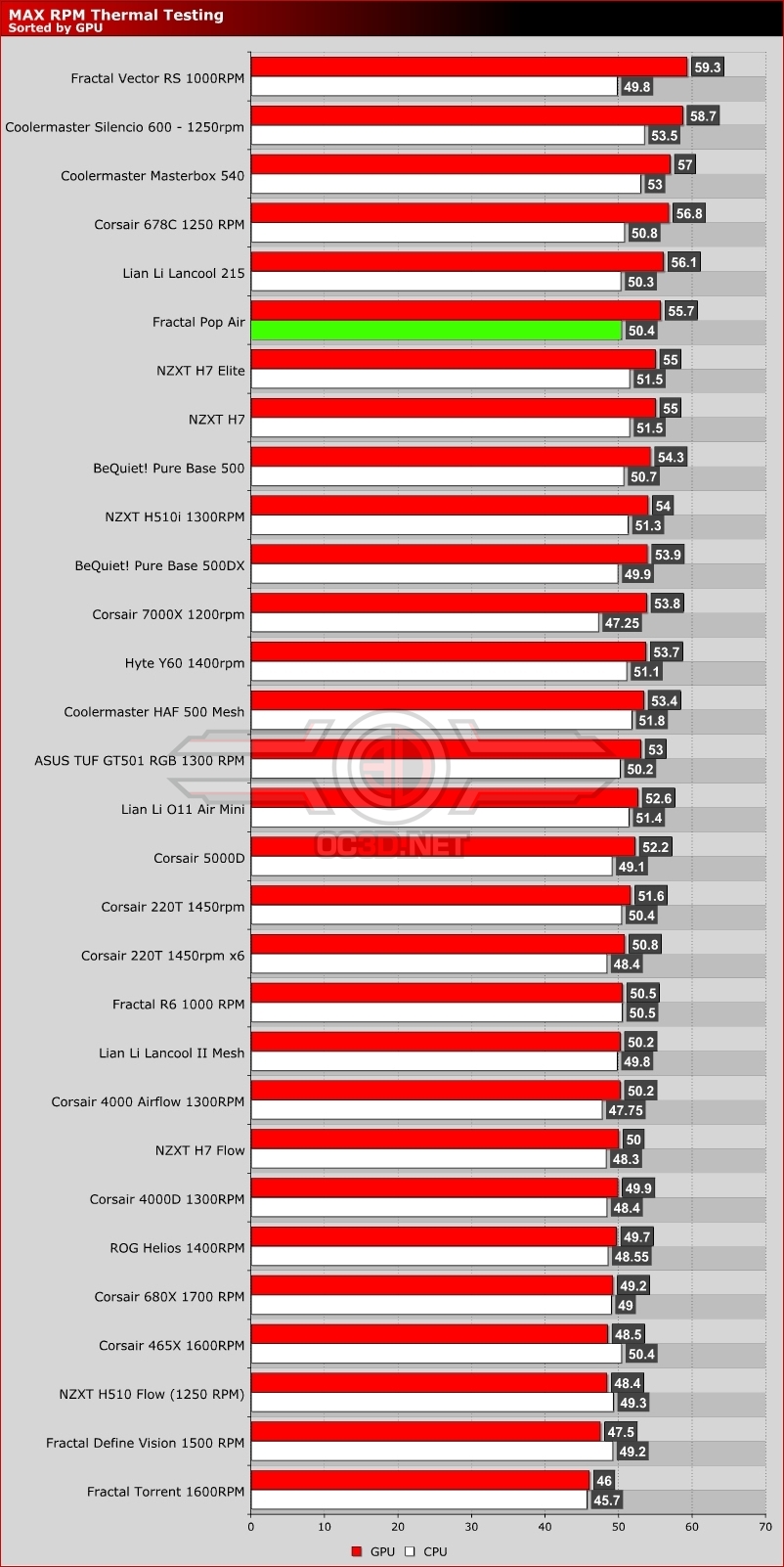Fractal Pop Air Review
Cooling Performance Â
Thermal performance is an essential factor for any PC case. Your system may look fantastic and seem silent from the outside, but all of that is for nought if your PC has the internal temperature of an oven. Your PC case needs enough airflow for your components to remain cool under load and to prevent any form of thermal throttling. For our test, we used the following hardware using fixed fan speeds (so that only the case and its included fans can influence thermal performance).
ASUS TUF Gaming GT501
Intel i9-9700K @4.8GHz at 1.2V
ASUS ROG Strix Z370-F Gaming @ 100% Current Capacity/ LL lvl16
Cooler Master Hyper 212 Black Edition @ 9V via Fan Speed Reducer
Nvidia GTX 980 Reference @ 60% Fixed Fan Speed
Corsair LP Vengiance LP (Grey) @ 3200MHz
Corsair MP500 M.2 NVMe SSD
Corsair RM550X Power Supply
The graph below showcases Delta temperatures with a controlled ambient temperature of 20 degrees Celsius. Â
600 RPM Fan Tests
To start our thermal tests, we had a look at how the Fractal Pop Air performed when its fans are set to 600 RPM. For our test system, this represents a worst case scenario, and allows us to tell how airflow starved a case is or isn’t. If you case performs well with its fan set to 600 RPM, your case has strong natural airflow with minimal fan speeds, something which higher fan speeds will only improve further. If you case performs poorly, it often signals that a case has poor natural airflow, and relies on the brute force of fans to create reasonable levels of air movement.
For the Fractal Pop Air, airflow is a problem, not due to the case’s design, but due to its fan selection. Fractal’s supplied 120mm fans offer poor airflow, so much so that the traditional test of simply placing our hands behind the fan left us very unimpressed. These fans simply do not move enough air, whether it is at 600 RPM or its maximum RPM of 1200 RPM.Â
In our 600 RPM test below, our GPU thermals reached 60 degrees in a thermally controlled room at 20 degrees Celsius. We set our GPU fan speeds to 60% at all times and run a fixed workload. Only case airflow can influence our results, and when our GPU reaches 80 degrees, we consider a case to have failed our testing. At 80 degrees, our GTX 980 graphics card thermally throttles, making it a logical fail point for this test.
CPU thermal results are better, but not anything overly impressive. Simply put, this case would benefit from better fans that can offer higher levels of airflow, especially around the system’s graphics card.
1000 RPM Fan Tests
At 1000 RPM, we continue to be unimpressed. Our GPU thermals reach our 80-degrees failure point, and it is becoming clear that Fractal’s included RGB fans are poor performers, even at higher RPMs. Spinning fans faster helps, but said fans need to be well designed to make better use out of these speeds. Again, we are not impressed with the Pop Air. Â
Max RPM Fan Tests
Ok, running the Fractal Pop Air’s fans at 100% finally gets our GPU thermals under control. Thank God! Even so, a result of 55.7 degrees remains very high. We need only look at the NZXT H510 Flow to see how a similarly designed case can offer much better thermals.
Sorry Fractal, but the Pop Air is not impressing us in the Airflow department…



